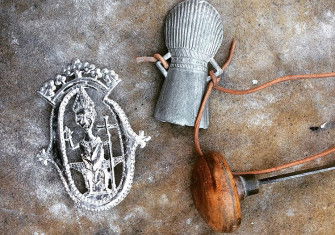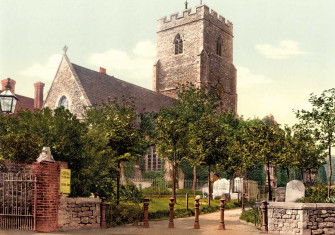Blood, Stones and Holy Bones
The spiritual power of medieval relics meant that Jerusalem, or a dragon, could be remade anywhere.

What do we miss when we describe a pilgrimage simply as travel to a destination – to Rome, or to Jerusalem? What makes a location worthy of pilgrimage? Medieval travellers explained: Chaucer’s pilgrims headed for Canterbury, ‘to seek the holy blissful martyr’, Thomas Becket. Bernhard von Breydenbach, a German clergyman who published a hefty pilgrimage account in 1486, summarised his trip to Sinai as ‘to the praiseworthy virgin and martyr St Katherine’. Though dead, these saints were as available for visiting as anyone living and, at the same time, their bones marked these places as holy. This is even starker in Katherine’s case: in life, she had no connection with Sinai. In death, her relics give it a distinct meaning, transcending even its biblical significance. Relics and medieval pilgrimage are thus intrinsically connected – but relics are much more than just holy bones and pilgrims’ relationships with them could be complicated.







